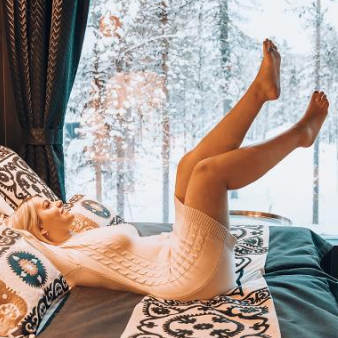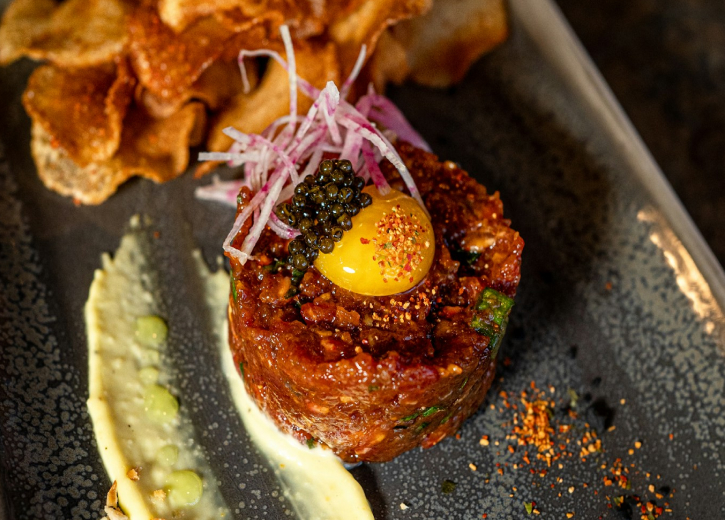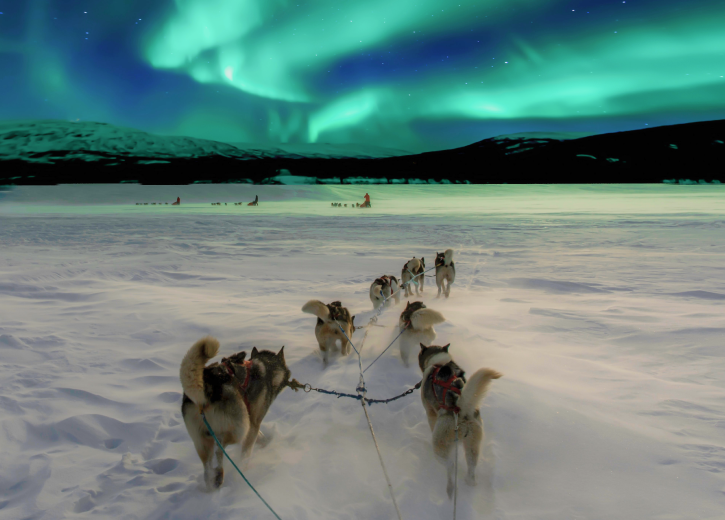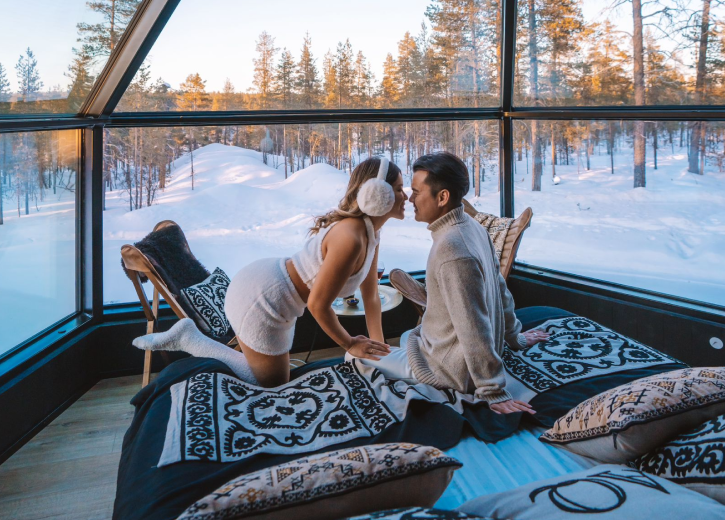How dark does it get in Lapland during winter?
Lapland in winter is a realm shrouded in mystery and beauty, where the days are dominated by the polar night. This phenomenon occurs when the sun does not rise above the horizon, leading to an extended period of darkness. In northern Finland, where our Aurora Queen Resort is located, this dark season can last for up to 51 days, offering a unique experience for both residents and visitors. Although the sun remains hidden, the sky is often illuminated by the magical glow of the Northern Lights, creating a breathtaking spectacle against the dark canvas of the polar night.
The polar night is not total darkness; rather, it is a time when the sun stays just below the horizon, allowing for a few hours of twilight. This subtle light is often reflected off the snow-covered landscape, adding a serene glow to the surroundings. The darkness transforms Lapland into a tranquil wonderland, inviting travelers to immerse themselves in its stillness and explore the enchanting beauty of the north.
For those venturing to Lapland during this season, the darkness is not a deterrent but a draw. It provides a rare chance to experience the Arctic in its most authentic form, with the added allure of witnessing the aurora borealis. Our glass-ceiling igloos and panorama suites offer the perfect vantage point to enjoy this natural spectacle from the comfort of your bed, making the dark season a time of magic and wonder.
What is the polar night?
The polar night is a natural phenomenon that occurs within the Arctic Circle, including Lapland, when the sun ceases to rise above the horizon for an extended period. This astronomical event is caused by the tilt of the Earth’s axis, which positions the Arctic regions away from the sun during their winter months. The polar night typically begins in late November and can continue until mid-January, enveloping the region in a prolonged darkness that is unique to the high latitudes.
During the polar night, the sun’s absence creates a surreal environment where daylight is replaced by a dim twilight that occurs at midday. This twilight, known as the “blue hour,” bathes the landscape in a deep, enchanting blue hue, offering a unique backdrop for exploring the Arctic wilderness. Despite the absence of direct sunlight, the sky is often alive with the vibrant colors of the Northern Lights, making it a prime time for aurora hunting.
The polar night significantly impacts the daily lives of those living in or visiting Lapland. The absence of sunlight requires adaptations in lifestyle and activities, as the rhythms of nature dictate the pace of life. Yet, this darkness also brings a sense of peace and reflection, allowing both residents and travelers to connect deeply with the rhythms of the natural world.
How do residents and tourists cope with the darkness?
Adapting to the long nights of the dark season requires a blend of tradition and innovation. For residents, embracing the darkness is part of life. They often engage in cultural activities that celebrate the season, such as gathering for candlelit dinners or enjoying the warmth of a sauna. These practices bring a sense of community and warmth, helping to combat the isolation that can accompany the prolonged darkness.
Tourists, on the other hand, find excitement in the unique experiences that winter travel to Lapland offers. Activities like snowmobile safaris, husky sledding, and reindeer rides become even more thrilling under the cloak of night. Our resort’s snowmobile tours, for example, are specifically designed to take advantage of the evening hours, offering a chance to explore the scenic forests while scanning the skies for the Northern Lights.
Both residents and visitors also rely on maintaining a routine to manage the effects of the dark season. Exposure to natural light during the twilight hours, taking vitamin supplements, and engaging in physical activities are common strategies to maintain energy and mood. The dark season becomes an opportunity to slow down, appreciate the quiet beauty of nature, and enjoy the simple pleasures of life in the Arctic.
What are the effects of winter darkness on mental health?
The winter darkness in Lapland can have varied effects on mental health, with some individuals experiencing conditions such as Seasonal Affective Disorder (SAD). This condition is linked to the lack of sunlight, which can disrupt sleep patterns and lead to feelings of lethargy and depression. However, understanding and awareness of these challenges have led to the development of effective coping strategies.
Light therapy is a common treatment used to mitigate the effects of SAD, where exposure to artificial light can mimic the benefits of natural sunlight. This therapy helps regulate sleep cycles and improve mood, making it a valuable tool for those struggling with the reduced daylight. Additionally, maintaining a balanced diet, exercising regularly, and staying socially connected are essential practices that support mental well-being during the dark season.
At Aurora Queen Resort, we encourage guests to embrace the peacefulness of the polar night, offering a serene environment that promotes relaxation and reflection. Our cozy accommodations and tranquil surroundings provide a comforting retreat, allowing visitors to unwind and rejuvenate amidst the beauty of the Arctic landscape. The experience of the polar night becomes not only a test of endurance but also an opportunity for personal growth and appreciation of nature’s cycles.
How does the darkness influence Lapland’s tourism industry?
The unique winter darkness of Lapland plays a significant role in attracting tourists seeking extraordinary experiences. The polar night enhances the allure of the Northern Lights, drawing visitors from around the globe to witness this celestial display. Our resort’s glass-ceiling igloos offer an unparalleled view of the auroras, providing an intimate and immersive experience that is hard to match.
Winter tourism thrives on the activities that are best enjoyed in the dark season, such as snowmobile adventures and aurora hunting. These activities are not only thrilling but also offer a glimpse into the way of life in the Arctic. The darkness adds an element of mystery and excitement, making each adventure feel like a journey into the unknown.
The tourism industry in Lapland has adapted to capitalize on the dark season, offering a range of experiences that highlight the beauty and tranquility of the region. From guided tours to cultural events, there is no shortage of opportunities for exploration and discovery. The polar night becomes a defining feature of the Lapland travel experience, inviting visitors to embrace the darkness and uncover the magic that lies within.
Conclusion
Exploring the impact of winter darkness in Lapland reveals a region rich in contrasts and unique experiences. The polar night, while challenging, also offers a canvas for awe-inspiring natural phenomena like the Northern Lights, drawing visitors who seek the extraordinary. Residents and tourists alike find ways to adapt and thrive during the dark season, turning potential challenges into opportunities for connection, reflection, and adventure.
Lapland’s ability to offer both serenity and excitement during its long winter nights is a testament to the region’s resilience and allure. At Aurora Queen Resort, we invite you to experience this enchanting season, where the darkness becomes a gateway to discovering the beauty and tranquility of the Arctic. Whether you are seeking relaxation or adventure, the winter darkness of Lapland promises an unforgettable journey into nature’s most captivating spectacle.



